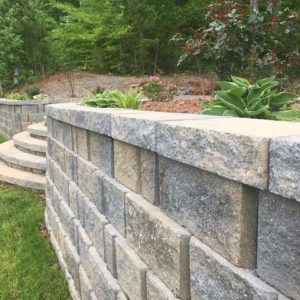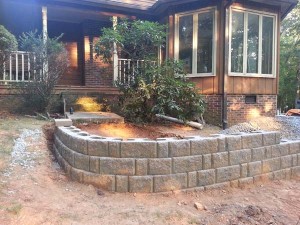A Retaining Wall Adds Beauty and Functionality
 One common problem that property owners find themselves having to deal with is how to contain large sections of soil or water. If left untreated, these issues could end up affecting an entire yard and causing severe damage. Thus, you may need retaining wall installation to solve this problem.
One common problem that property owners find themselves having to deal with is how to contain large sections of soil or water. If left untreated, these issues could end up affecting an entire yard and causing severe damage. Thus, you may need retaining wall installation to solve this problem.
If you have areas of your property where you need to hold back water or soil, consider putting in a retaining wall. Although designed to be functional, retaining walls can also add beauty and style to your yard. There are several different materials that can be used to create a retaining wall, including concrete, rocks, and timber.
The Benefits of Adding a Retaining Wall to Your Property
Low Maintenance and Durable
Once a retaining wall has been constructed, there is virtually no maintenance involved. Retaining walls are designed to stand up to the elements so they usually don’t need any repairs. Once it’s up, all you need to do is enjoy.
Highly Functional
As long as your retaining wall has been built the right way, it will be able to stand up to a large amount of weight. Well-constructed retaining walls can hold back soil or water for many years without any problems. Retaining walls can also prevent erosion as well as flooding
Improved Aesthetics and Increased Home Value
Because there are many different styles and varieties to choose from, retaining walls give you a lot of different options. For example, vertical gardens are a great way to show off plants and flowers. If done well, a retaining wall will add to the curb appeal of your home and also increase the property value.
Retaining Walls are Environmentally Friendly
Naturally-built retaining walls use up to 50 percent less concrete than traditional walls. These walls are long-lasting and better fit in with the natural surroundings of your property.
Types of Retaining Walls
Often, retaining walls help solve problems of a sloped yard. Here are a few types to consider:
Gravity
A gravity retaining wall is only three-to-four feet all and uses its own weight to hold back dirt or rocks. They are usually made of stone, brick, concrete, or cinder blocks.
Piling
Also known as sheet pile retaining walls, piling walls are used in places that have soft soil. A piling wall is made of wood planks with vinyl or steel driven into the ground.
Cantilever
Made of mortared stone or concrete, cantilever retaining walls contain steel reinforcements. These types of walls resemble an upside down letter T or backwards letter L and the wall cantilevers the weight of the soil to its footing.
Anchored
An anchored retaining wall has extra cables that are firmly planted into the dirt behind the barrier. The cable and anchor are like a large nail that secures the wall to the ground. This kind of retaining wall is good for particularly heavy loads or in situations where there isn’t a lot of space.
If you find yourself faced with the dilemma of how to contain soil or water, consider having a retaining wall put in by Landscape Solutions and Design. Not only will our expert installation solve your problem, it will also enhance the look of your yard. Moreover, our professional team recommends the best type of retaining wall to solve your individual problem.

